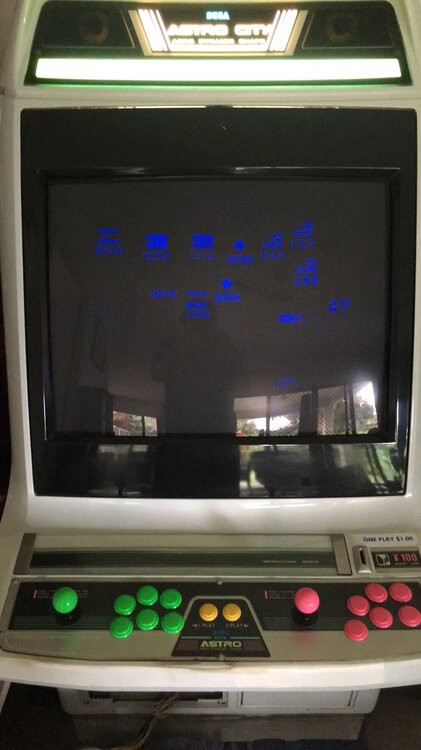Street Fighter 2 Hyper Fighting, a staple in arcade history, is known for its blistering speed and iconic characters. For enthusiasts and arcade cabinet owners, keeping these classic boards running is a labor of love. This is the story of troubleshooting and repairing a Street Fighter 2 Hyper Fighting (SF2 HF) arcade board, delving into PAL chip replacements and the hunt for the root cause of graphical glitches.
Initially, during the diagnostic phase of this CPS1 board, suspicion fell upon the Programmable Array Logic (PAL) chips. It’s not uncommon to encounter boards with mismatched or incorrect chips, sometimes deceptively sold as “complete” despite underlying faults. Guidance from the helpful community at jammarcade.net suggested that PALs on the ‘A’ board are generally consistent across CPS1 titles – designated as IO, SND, and PRG. However, the single PAL on the ‘B’ board, located at A1, is game-specific and often crucial for graphics tile arrangement. While the screen display seemed mostly intact, albeit misplaced, a faulty or missing A1 PAL could manifest as a black screen or severely fragmented graphics. Yet, RAM issues remained a prime suspect, residing entirely on the ‘A’ board. A straightforward troubleshooting step involves swapping ‘A’ boards or testing the ‘BC’ boards on a known working ‘A’ board to isolate the source of the problem.
This advice sparked hope that the custom ‘C’ board ASIC might be functional, and the issue could indeed be PAL-related. GAL16V8 chips were ordered, and after a patient month-long wait for delivery from China, the repair attempts could commence.
Street Fighter 2 CE B/C boards utilize four key PAL chips. These include the S9263B at position A1 (top left on the ‘B’ board), IOB1 (middle bottom of the ‘B’ board), and IOC1 and C632, both situated on the ‘C’ board near the custom ASIC. With invaluable help from dumps provided by porchy and the community at jammarcade.net, replacement chips were programmed for all four PAL locations. The intention was to systematically identify the faulty component.
To assess the impact, all four replacement chips were installed simultaneously. The outcome was a mixed bag – progress and setbacks intertwined. The visuals shifted to a very dark blue, losing the blocky distortion, but a new set of problems emerged. The boot screen failed to appear, and the game triggered a watchdog reset shortly after the attract mode’s face-off screen.
 Dark blue and blocky Street Fighter 2 Hyper Fighting screen after initial PAL chip replacement
Dark blue and blocky Street Fighter 2 Hyper Fighting screen after initial PAL chip replacement
 Closer view of the distorted graphics on the Street Fighter 2 Hyper Fighting arcade screen
Closer view of the distorted graphics on the Street Fighter 2 Hyper Fighting arcade screen
This indicated progress in the right direction. The next step was to methodically reintroduce the original chips, one by one, to pinpoint the source of the new issues. While seemingly counterintuitive, the goal was to eventually replace all original chips as a preventative measure against future failures. The S9263B was the first original chip to be re-inserted. During removal, a ground pin unfortunately snapped off. A workaround involved running a wire to an off-board ground point, allowing the original S9263B to be re-installed and tested. Powering on the board with the original S9263B reinstated brought back the initial problem, now exacerbated – the dark blue screen returned, accompanied by blocky graphics. This confirmed the S9263B as the initially faulty chip, necessitating its replacement. The newly programmed GAL16V8 was then put back in its place.
Next, the C632 chip on the ‘C’ board was swapped. This change yielded a significant breakthrough.
 Street Fighter 2 Hyper Fighting arcade screen showing successful boot after C632 PAL chip replacement
Street Fighter 2 Hyper Fighting arcade screen showing successful boot after C632 PAL chip replacement
 Gameplay screenshot of Street Fighter 2 Hyper Fighting with minor glitches after PAL chip replacement
Gameplay screenshot of Street Fighter 2 Hyper Fighting with minor glitches after PAL chip replacement
Success was achieved! While minor graphical glitches persisted, it was a major step forward. These remaining glitches were suspected to stem from a faulty mask ROM at position 3. Additionally, text glitches observed in Final Fight and the Street Fighter 2 boot screen (displaying “EPC” instead of “ETC”) on the ‘A’ board remained unresolved, deferred to a later stage of repair. Notably, the RAM chips on the board were predominantly Fujitsu branded, initially making them prime suspects for the remaining issues. However, the custom ASIC on the ‘A’ board also loomed as a potential culprit.
Further investigation involved replacing all RAM chips on the ‘A’ board. Disappointingly, this had no impact on the persisting glitches. This pointed towards the custom ASIC as the likely source of the remaining problems, necessitating its replacement – a task put on hold pending the acquisition of a suitable replacement chip. Despite these lingering issues, the ‘B’ and ‘C’ boards were confirmed to be functioning correctly, a significant victory in the repair journey of this Street Fighter 2 Hyper Fighting arcade board.
Thanks for following this repair log. Stay tuned for future updates as the hunt for an ASIC replacement continues!

